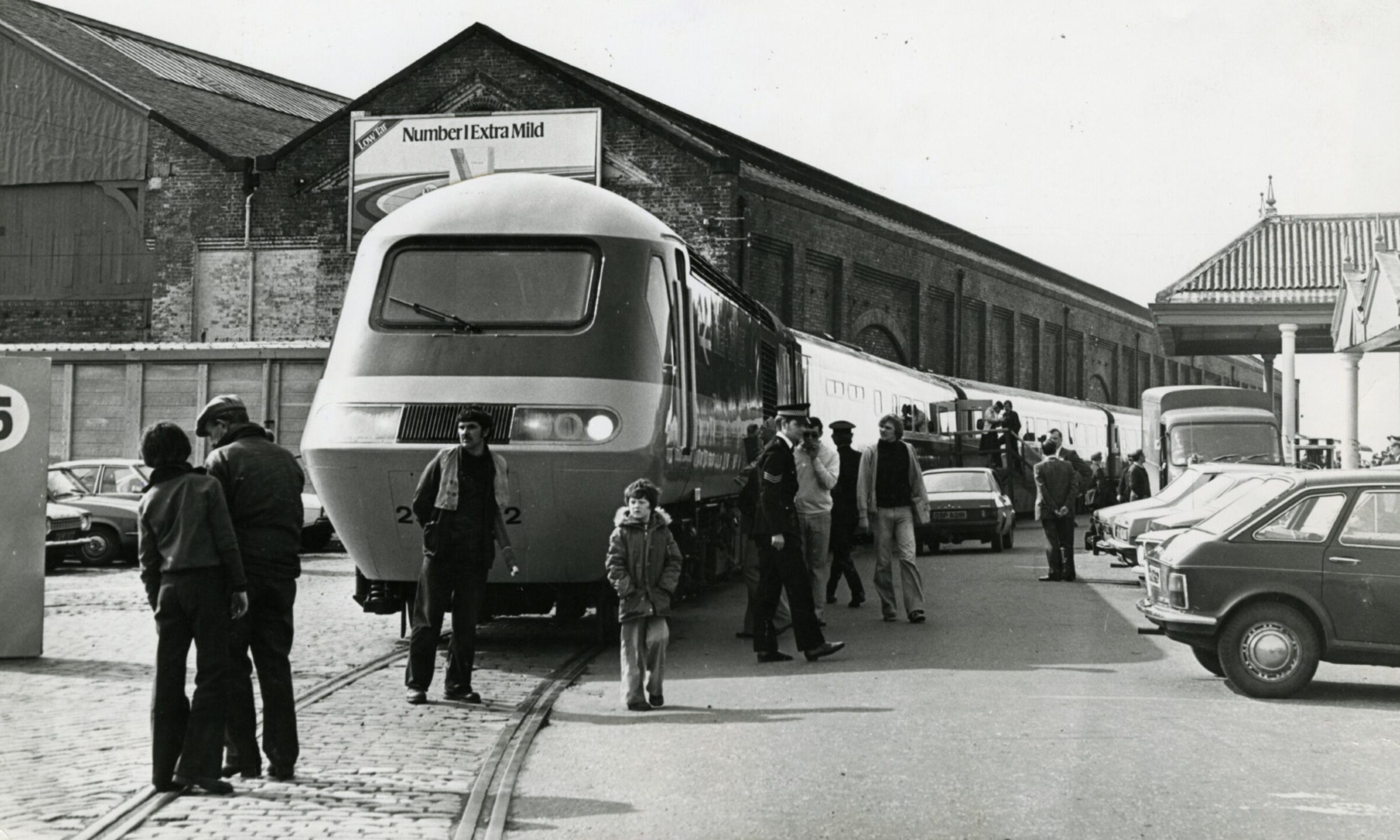
The man who designed the InterCity 125 took his cue for its iconic look from racing cars.
Kenneth Grange, who also designed the Kodak Instamatic camera, looked upon the locomotive and declared them to be “big, ugly, blunt-nosed things”.
His efforts led to a train so stunning that, as it swept elegantly in and out of Dundee, along the east coast main line, it “even stopped some golfers on their back swings”.
The InterCity 125 offered greater comfort and efficiency and was an instant hit with train fans – even the food was better.
Had Mr Grange sped to the rescue of British Rail?
The 125 story really started in the late 1960s when the railway was coming under extreme pressure from other modes of transport.
The go-ahead was given to design a high-speed diesel train in August 1970.
Prior to full-scale production, a prototype was completed in 1972 and set a world diesel speed record of 143mph in June 1973.
It got its name from the train’s operational speed of 125mph.
Getting ready for the InterCity 125
A £31 million seven-part improvement scheme to rail lines was completed in readiness for the introduction of the InterCity 125 trains in Scotland.
Old semaphore signals were replaced with multiple aspect colour light signalling.
The north end of the main line platforms at Dundee was “cut back” to provide the necessary clearance for the coaches, which were 10 feet longer.
Work was also carried out on the track in the station and the Dock Street tunnel.
The work included signalling and track modernisation from Dalmeny to Ladybank and taking in local lines in Fife like those serving Dunfermline and Cowdenbeath.
The first InterCity 125 service was introduced between Cardiff, Bristol and London in October 1976 and was extended to other major cities over the next two years.
Commonwealth presidents and prime ministers travelled on the 125 to Gleneagles in June 1977 to agree a sporting boycott with South Africa.
The Gleneagles Agreement stepped up pressure on the country’s apartheid regime.
The 125 was seen for the first time on the Forth Bridge in April 1978.
A three-day Scottish tour called at Dundee, Aberdeen, Inverness and Perth.
The train turned heads at Dundee station
The 125 arrived in Dundee and was switched to a track in Riverside Drive where the amassed crowds got a glimpse of the new train.
This particular piece of track was the former North British Railway harbour connection which at one time ran over South Union Street.
The Courier said: “Coming into operation on May 8, the train will cut the travelling time between London and Edinburgh by 38 minutes, to four hours and 50 minutes.
“The train will not service Dundee and Aberdeen until October, but immediate benefits for Tayside will come into effect from May 8.
“From that date it will be possible to leave Dundee at 6.20am and reach London at 1.09pm, instead of the present time of 3.18pm.”
The Courier highlighted the air-conditioning, automatic sliding doors, hot and cold snacks and “smooth ride and lack of noise” at speeds as high as 125mph.
The new trains operated along the full route from October 1978 which started with the 9am Aberdeen-London and 11.25am London-Aberdeen services.
British Rail said the 125 was the high comfort train with more space in the coaches, bright colour schemes, wall to wall carpets and comfortable seats.
Corries singer was among the passengers
The first scheduled train north of Edinburgh caught passengers by surprise.
Passengers joining the train at Aberdeen, Stonehaven, Montrose, Arbroath, Dundee and Kirkcaldy were presented with special commemorative certificates and booklets.
One of the train’s first passengers was Ronnie Browne of The Corries.
“I just booked a seat on the train and had no idea it was the first high-speed train on this route,” he said.
“I’ve travelled on these trains before and I think they’re very smooth indeed.
“The standard of service is very good too.”
Courier journalist Ian Lamb made the journey across the road from the Keptie Street office in Arbroath and travelled to London on the maiden voyage.
He told me: “I remember the first impression of luxury and style as I joined the group in a first class coach on the maiden voyage.
“There was air conditioned heating on a train, luxurious wide seats and the now familiar but then new layout of tables for four on one side and two on the other.
“There were even curtains on the windows!”
Train was a huge hit with the public
Mark Rae was there when the 125 arrived in Dundee.
The eight-year-old from Fintry stood on the platform with his camera.
He got some great shots of the train which was a firm favourite with enthusiasts.
James Dickson was at the controls from Dundee to Edinburgh.
He said: “A lot of folk have been watching us go by because the 125 is still very much a novelty in Scotland.
“We’ve even stopped some golfers on their back swings.”
The full high-speed timetable came into operation in May 1979.
The 125 could transport passengers at previously unheard-of speeds.
And it flew.
The Aberdeen to London journey time was reduced by one hour 14 minutes.
The InterCity service was a big hit with the public in the 1980s.
The marketing around that is best left to the history books – not least because the adverts all featured the late and disgraced former TV star Jimmy Savile.
Did the InterCity 125 save British Rail?
Jim Page from the Angus Railway Group said the 125 helped to save British Rail .
“Railways had a poor press back then and were considered a tad dated,” he said.
“I recollect one guy, I think he was a MP, who suggested that all railways north of the Central Belt should be ripped up and turned into roads.
“This, to save road congestion!
“The InterCity 125 improved speed which meant that it was now possible for the railway to compete with air travel within the UK.
“The airways had much shorter journey times of course but adding in the prescribed early arrival at airports and the distance into cities, there was no longer much of a difference in overall timings.”
He said this proved a great attraction to travellers and gave rail travel a real boost.
“With the later introduction of privatisation which gave rail travel another boost, railways have now regained a lot of ground,” he said.
“Unfortunately these year long strikes may have reversed this.”
It was a train built to last.
Some are still going strong and remain in use on local services.
ScotRail has 25, which are currently planned to operate until 2030.
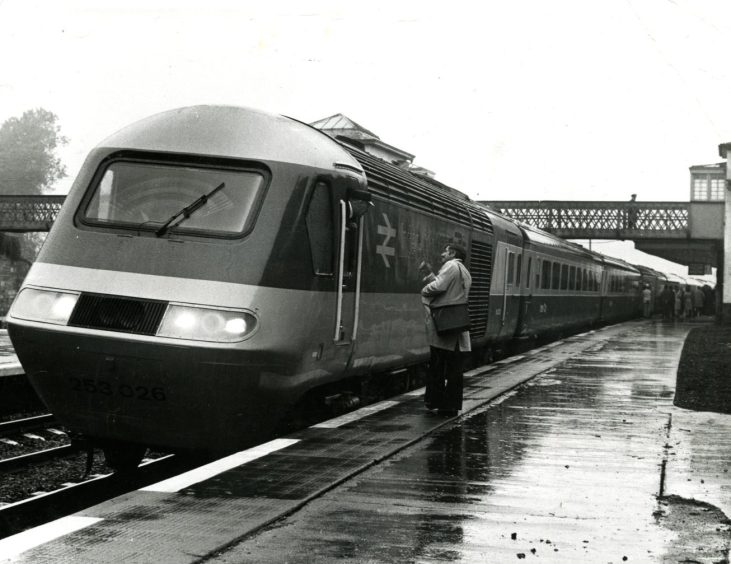
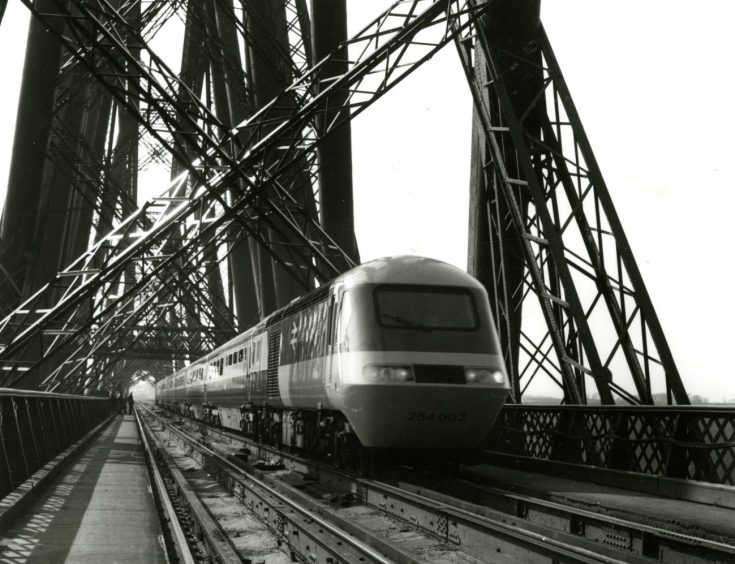
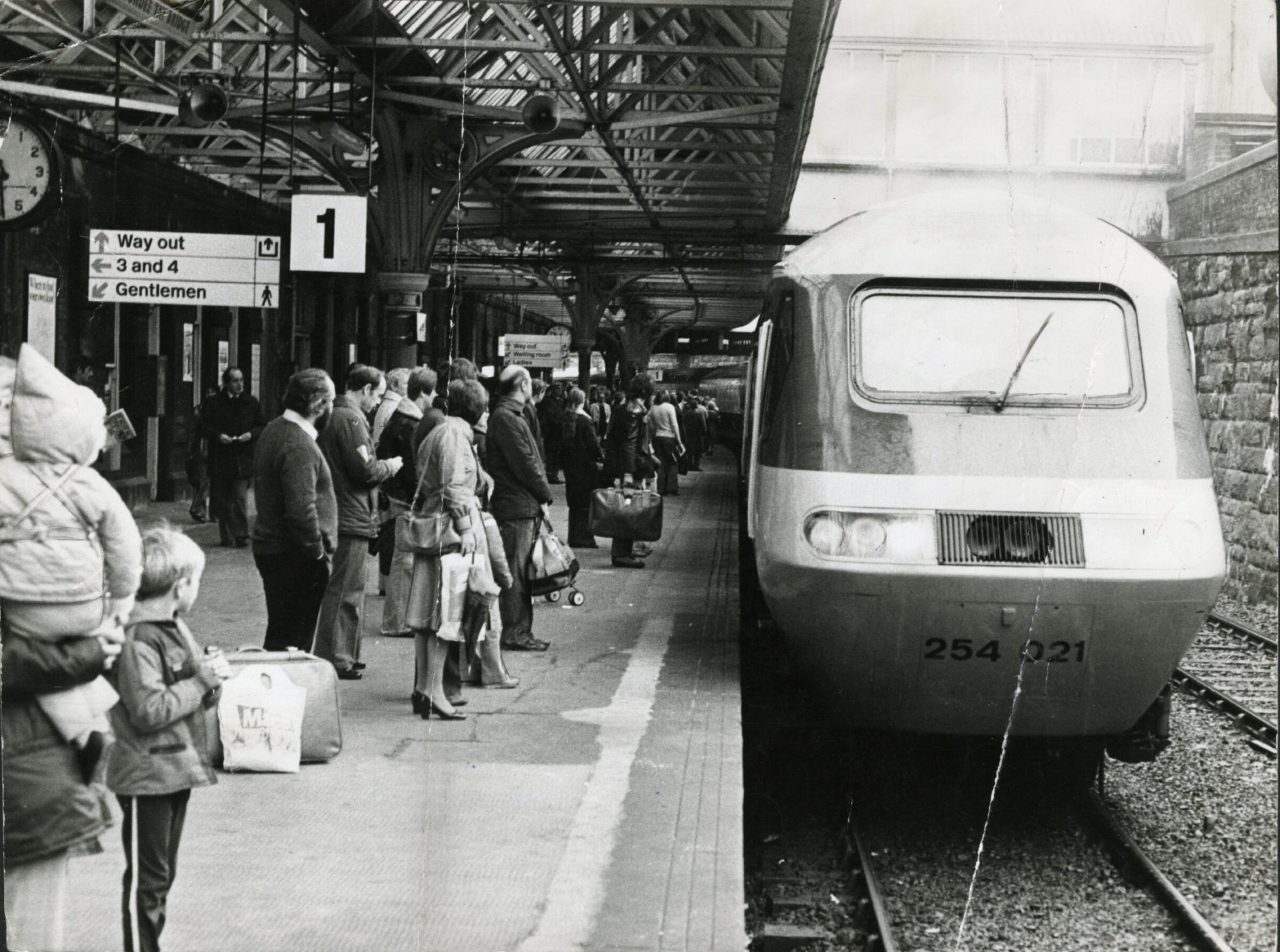
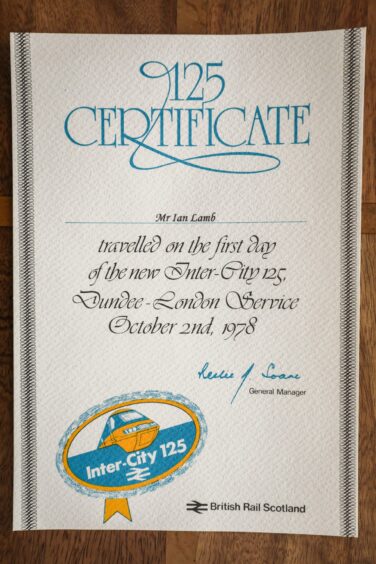
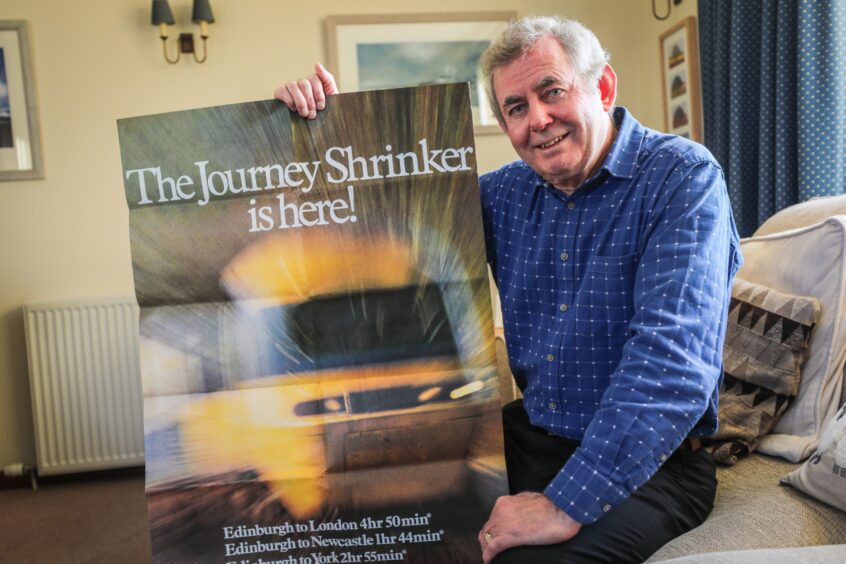
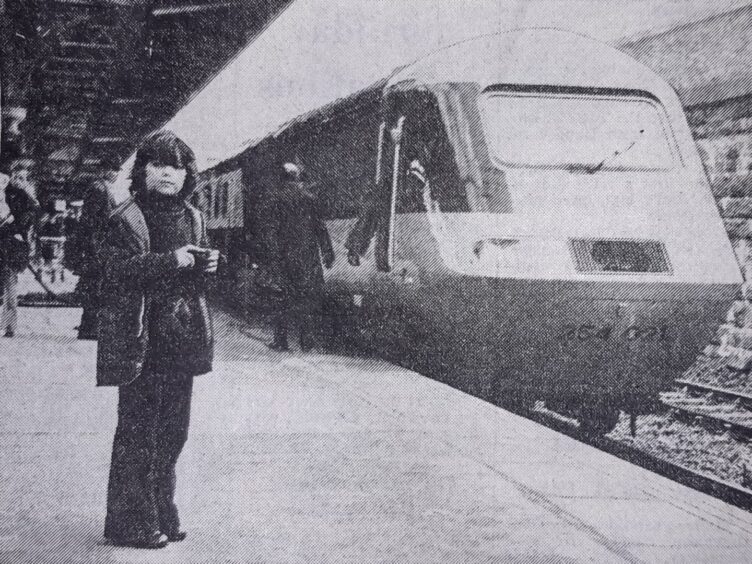
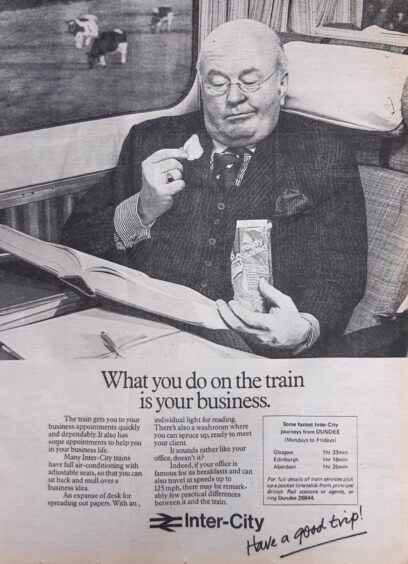
Conversation